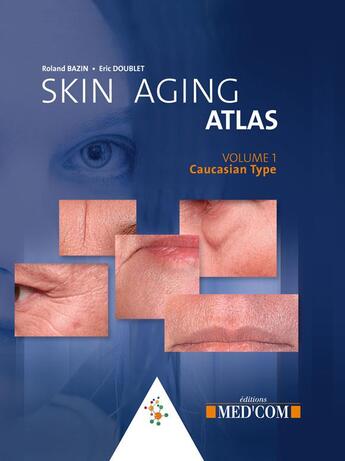Des idées de lecture pour ce début d'année !
Passionné(e) de lecture ? Inscrivez-vous
gratuitement ou connectez-vous pour rejoindre la
communauté et bénéficier de toutes les fonctionnalités du site !

The objective evaluation of facial aging is a difficult exercise. Many publications have appeared over the past few years that seek to classify facial aging : crow's feet, glabellar wrinkles, ear lobe aging, neck sagging, etc. These publications show the advantages and need for objective evaluation tools for facial aging. These tools make it possible to classify homogeneous patient populations and greater objectivity in the study and evaluation of the "before/after" results of anti-aging treatments.
"Skin Aging Atlas" is the latest contribution to these classifications. It is also the first true topographic atlas of facial aging. In a single booklet, it offers all the criteria for evaluating the aging of Caucasian men's and women's facial skin.
In the first part, this atlas, assembled by R. Bazin, describes the single methodology used for each criterion.
Each classification thus allows a precise grade to be given to a specific region of the face (glabellar wrinkles, crow's feet;, neck sagging, etc.). Thanks to this unique methodology, the classifications can also beused together to evaluate the general aging of the face.
This atlas is therefore particularly useful, and perhaps essential, for professors and researchers interested in facial aging, and for practitioners, doctors, dermatologists and plastic surgeons wishing to evaluate the results of local "anti-aging" treatments (e.g. botulinum toxin on crow's feet) or more general treatments (e.g. results of a face-lift or peeling).
Clear explanations and the illustrative quality of the photographic plates make the atlas easy and practical to use, and the quality of the binding facilitates handling.
This atlas is therefore modern and comprehensive, encompassing the current state of knowledge on the subject in a homogeneous unit. By using it to evaluate medical and surgical rejuvenation treatments, it has finally become possible to assess each area of the face and the face as a whole.
The author should be hailed for completing and summarizing this excellent work, which is the fruit of his years of experience as evaluation director at the L'OREAL RESEARCH department.
"Skin Aging Atlas" will undoubtedly become the gold standard of aging evaluation tools for the Caucasian face.
Il n'y a pas encore de discussion sur ce livre
Soyez le premier à en lancer une !

Des idées de lecture pour ce début d'année !

Si certaines sont impressionnantes et effrayantes, d'autres sont drôles et rassurantes !

A gagner : la BD jeunesse adaptée du classique de Mary Shelley !

Caraïbes, 1492. "Ce sont ceux qui ont posé le pied sur ces terres qui ont amené la barbarie, la torture, la cruauté, la destruction des lieux, la mort..."